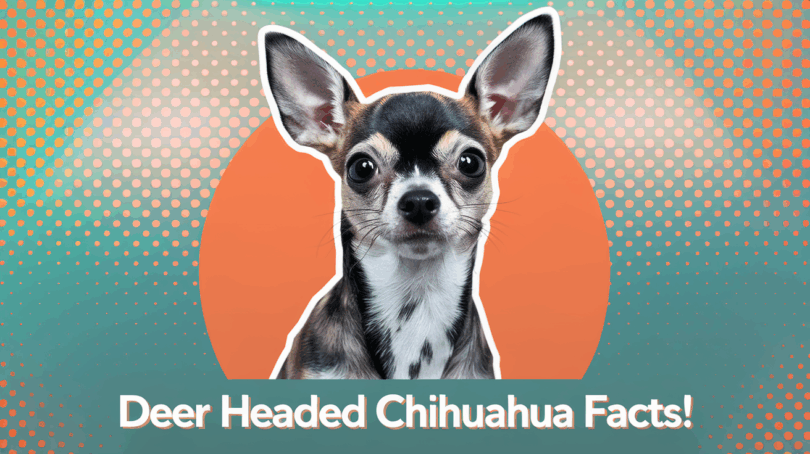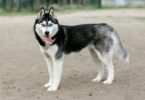Imagine coming home to a loyal companion whose expressive eyes and delicate frame radiate endless affection. For many pet lovers, this tiny powerhouse of personality becomes more than a dog—it’s family. Meet the deer head Chihuahua, a charming variation of the world’s smallest breed, celebrated for its unique silhouette and spirited nature.
Unlike the round “apple head” type, this pup sports a longer snout and upright ears reminiscent of a young deer. Originating from Mexico, these small dogs carry a rich history intertwined with ancient civilizations. Their compact size makes them ideal for apartment living, but their bold temperament often rivals larger breeds.
This guide explores everything from their distinctive traits to daily care essentials. You’ll learn about their energetic yet affectionate behavior, nutritional needs, and how to create a safe environment for their curious nature. We’ve also gathered expert tips to help you decide if this breed aligns with your lifestyle.
Whether you’re a seasoned owner or considering adoption, understanding their unique requirements ensures a joyful partnership. Let’s dive into what makes these petite companions so unforgettable.
History and Origins of the Deer Headed Chihuahua
Long before becoming a beloved companion, this small canine played a role in ancient rituals and royal life. Its roots trace back to Mexico’s Techichi, a sacred dog bred by the Toltec and Aztec civilizations. Archeologists uncovered Techichi remains in pyramids dating to 300 BCE, suggesting their spiritual significance.
From Aztec Roots to Modern Recognition
Spanish conquistadors documented Techichis in the 16th century, noting their use in ceremonies. By the 1850s, explorers rediscovered these dogs in Chihuahua, Mexico, sparking global interest. The American Kennel Club recognized the breed in 1904, but only approved the round-skulled “apple head” type for shows.
Apple Head vs. Deer Head: Understanding the Distinction
While the apple head became the AKC standard, the deer head variety retains ancestral traits like a longer muzzle and sloped forehead. Genetic studies suggest this apple head Chihuahua emerged through selective breeding, whereas deer heads mirror earlier Techichi features. Despite lacking show eligibility, their historical authenticity keeps them popular among enthusiasts.
Modern deer head Chihuahuas thrive as family pets, embodying centuries of resilience. Their evolution reflects both cultural shifts and human preferences shaping canine companions over generations.
Distinctive Appearance and Physical Traits
The deer head Chihuahua stands out with elegant, angular features mirroring its wild namesake. These compact companions typically measure 8-12 inches tall and weigh 4-10 pounds. Their slightly larger frame compared to apple head types makes them less prone to certain health issues while retaining a portable size.
Deer-Like Features and Overall Size
Signature traits include a narrow muzzle resembling a fawn’s face and ears that stand alert like a young deer. The sloped forehead creates a streamlined profile distinct from rounder-headed varieties. Though petite, their lean build allows surprising agility during play or walks.
Coat Variations and Color Options
Two coat types exist: smooth short-haired versions needing weekly brushing and long-haired deer head Chihuahuas requiring daily grooming. Common colors range from classic fawn and chocolate to striking merle patterns blending gray, white, and black. Some showcase creamy white markings on their chest or paws.
These visual characteristics demand tailored care. Delicate ears need regular cleaning, while long coats benefit from detangling sprays. Their expressive eyes—often dark and luminous—require protection from wind during outdoor adventures.
Temperament and Behavioral Characteristics
Owners often describe their deer head Chihuahuas as pint-sized powerhouses of personality. These dogs blend fierce loyalty with playful energy, creating a dynamic companion that thrives on attention. While their small stature might suggest fragility, their bold demeanor frequently surprises first-time pet parents.
Loyal, Feisty, and Full of Personality
Deer head Chihuahuas form intense bonds with their owners, often shadowing them around the home. Their alert nature makes them excellent watchdogs, though their tendency to bark at unfamiliar sounds requires patient training. Positive reinforcement techniques work best, as harsh methods can trigger stubbornness.
Interactive puzzle toys help channel their sharp minds constructively. Daily play sessions prevent boredom-related behaviors like chewing or excessive vocalizing. Despite their sassy reputation, these dogs shower trusted humans with affection and thrive on consistent routines.
Interactions with Kids and Other Pets
Early socialization proves crucial for harmonious household relationships. Deer head Chihuahuas may view toddlers as unpredictable, making supervision essential during interactions. Introduce them slowly to larger pets using controlled environments to prevent territorial disputes.
Multi-pet households succeed when establishing clear boundaries. Reward calm behavior around other animals with treats and praise. With proper guidance, these spirited dogs adapt well to families who respect their need for gentle handling and quiet retreat spaces.
Essential Health Considerations for deer headed chihuahua
Keeping your compact companion healthy requires understanding their unique vulnerabilities. While generally robust, these small dogs face specific risks that demand proactive care. Regular veterinary check-ups and tailored routines can significantly enhance their quality of life.
Common Health Concerns and Patellar Luxation
Patellar luxation ranks among the most frequent issues, affecting 20% of toy breeds. This knee condition occurs when the kneecap slips out of place, causing limping or pain. Their delicate bone structure and active nature increase susceptibility to joint problems.
Dental disease also poses a major threat due to crowded teeth in small jaws. Daily brushing and annual cleanings prevent tooth loss and gum infections. Hypoglycemia risks in puppies necessitate frequent meals, while older dogs may develop heart murmurs.
With proper care, these pets often live 12-16 years. Maintaining a healthy weight through measured meals reduces strain on joints. High-quality food rich in omega-3s supports coat and skin health. Annual bloodwork helps detect organ issues early.
Watch for signs like reluctance to jump or excessive panting, which may indicate discomfort. Partnering with a vet experienced in toy breeds ensures timely interventions. Preventive measures today pave the way for vibrant tomorrows.
Daily Care, Training, and Exercise Guidelines
Maintaining a thriving routine for your energetic companion involves balancing physical activity with mental challenges. These spirited pets require tailored approaches to stay healthy and engaged. Let’s explore practical strategies for meeting their unique needs.
Exercise Needs and Playtime Recommendations
Despite their compact size, these small dogs need 30-45 minutes of daily activity. Short walks around the neighborhood paired with indoor fetch sessions work well. Interactive toys like treat puzzles or snuffle mats keep their sharp minds occupied during downtime.
Create obstacle courses using cushions or low jumps to satisfy their natural curiosity. Rotate toys weekly to prevent boredom. Morning and evening play sessions help burn energy while reinforcing your bond.
Effective Training Techniques for Stubborn Behaviors
Consistency proves crucial when addressing stubborn tendencies. Use reward-based methods with high-value treats for desired actions. Keep training sessions under 10 minutes to match their attention span.
For excessive barking, teach a “quiet” command using positive reinforcement. Redirect digging instincts to designated sandboxes. Professional trainers recommend clicker training for precise communication.
Always end sessions on a positive note with playtime. Pair structured learning with free exploration to nurture confidence. A well-rounded guide from certified experts can help establish lasting habits.
Nutrition, Grooming, and Maintenance Tips
Proper nutrition and grooming form the foundation of a thriving life for these petite companions. Tailored care routines help maintain their energetic nature while preventing common health issues. Let’s explore practical strategies to keep your furry friend looking and feeling their best.
Balanced Diet and Feeding Guidelines
High-quality kibble designed for small breeds supports their fast metabolism. Opt for formulas with real meat as the first ingredient and 25-30% protein content. Most adults thrive on ¼ to ½ cup daily, split into two meals to stabilize energy levels.
Use a measuring cup to prevent overfeeding—extra pounds strain delicate joints. Treats should never exceed 10% of daily calories. Consult your vet about adding omega-3 supplements for skin and coat health.
Grooming Routines for Different Coat Types
Smooth-coated versions benefit from weekly brushing with a soft bristle brush. Bathe every 3-4 weeks using gentle shampoo to preserve natural oils. Long-haired dogs need daily combing with a stainless steel comb to prevent mats behind ears and legs.
Trim nails every 3 weeks to avoid overgrowth. Weekly ear checks with a vet-approved cleaner reduce infection risks. Dental chews and toothpaste formulated for small mouths combat plaque buildup.
Regular weigh-ins help track body condition. Pair portion control with interactive feeders to slow eating. These simple steps promote vitality throughout their 12-16 year lifespan.
Finding a Trustworthy Breeder or Adoption Option
Selecting your future companion requires careful research and ethical considerations. Whether adopting or purchasing, prioritizing transparency ensures a healthy start for your pet. Responsible choices protect both animals and owners from potential challenges.
Identifying Ethical Breeder Practices
Reputable breeders prioritize health certifications over profits. Always request proof of genetic testing for common conditions like patellar luxation. Visit facilities personally to assess cleanliness and observe how puppies interact with their mother.
Expect to pay $800-$2,500 for deer head Chihuahuas from certified sources. The American Kennel Club’s marketplace lists breeders meeting strict standards. Avoid sellers refusing to share veterinary records or breeding history.
Adoption Pathways and Rescue Benefits
Shelters and breed-specific rescues often have these dogs needing homes. Adoption fees typically range from $150-$450, covering initial vaccinations and spaying. Many organizations conduct behavioral assessments to ensure good family matches.
Ask rescue coordinators about the dog’s background and temperament. Reputable groups provide post-adoption support for training or medical needs. Choosing adoption gives older pets a loving environment while freeing shelter space for other animals.
Verify credentials through local kennel clubs or online reviews before committing. Whether adopting or buying, patience leads to rewarding partnerships built on trust and care.
Wrapping Up Your Journey with Your Deer Headed Chihuahua
Embracing life with this spirited companion means balancing their lively personality with thoughtful care. Their rich history as descendants of ancient Mexican breeds pairs with modern adaptability, making them ideal for urban living. From managing their small size to addressing potential health problems, owners gain rewarding experiences through attentive routines.
Proper training and consistent nutrition form the foundation of their well-being. Daily brushing for long-haired types, joint-friendly exercise, and regular vet checks help maximize their 12-16 year life expectancy. Whether you choose a puppy from a kennel club-registered breeder or adopt an adult, prioritize transparency about medical history.
Successful ownership hinges on patience and education. Early socialization reduces behavioral challenges, while portion control maintains healthy weight levels. For those considering similar small dog breeds, explore our guide to the Shih Tzu Chihuahua mix for comparison.
Though compact, these dogs leave a lasting paw print on your heart. With the right approach, you’ll nurture a bond built on mutual trust—proving great companionship comes in petite packages.
FAQ
How does a deer head Chihuahua differ from an apple head?
Deer head Chihuahuas have longer noses, sloping foreheads, and larger ears compared to the rounder “apple dome” skulls of apple head variants. They’re typically slightly taller and less likely to have prominent eye issues due to their skull shape.
Are these dogs prone to specific health conditions?
While generally healthy, they may develop patellar luxation (knee joint issues), dental problems due to small jaws, and heart conditions. Regular vet checkups help catch concerns early.
Do deer head Chihuahuas get along with children?
Their tolerance depends on socialization. Early exposure to gentle kids helps, but their small size makes them fragile. Supervision is crucial to prevent accidental injuries during play.










Leave a Comment